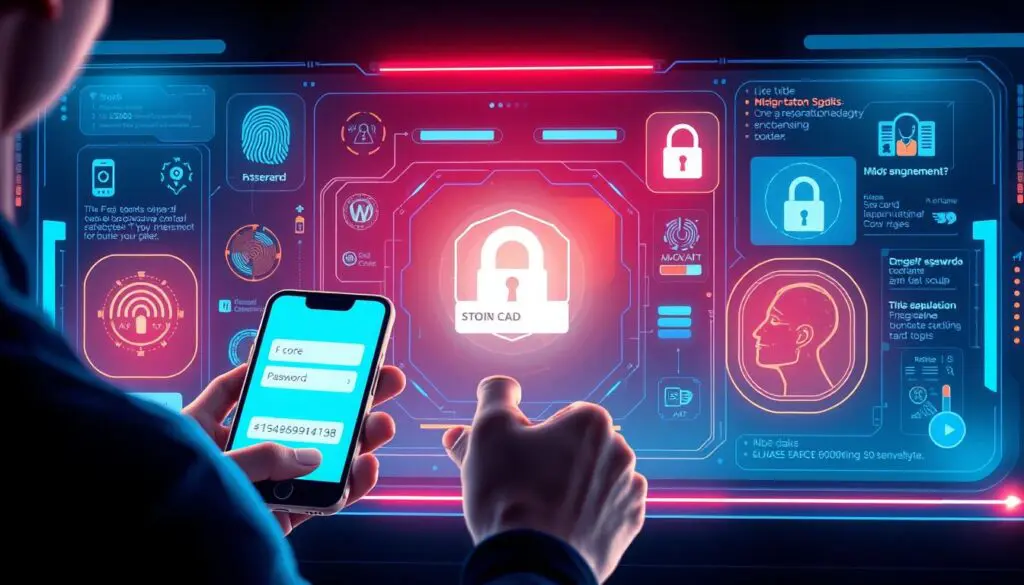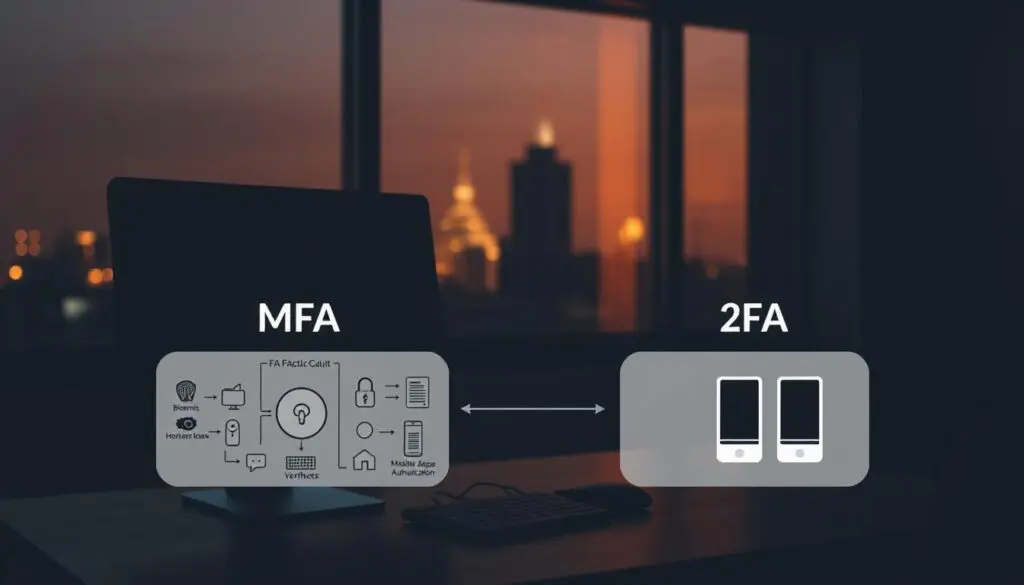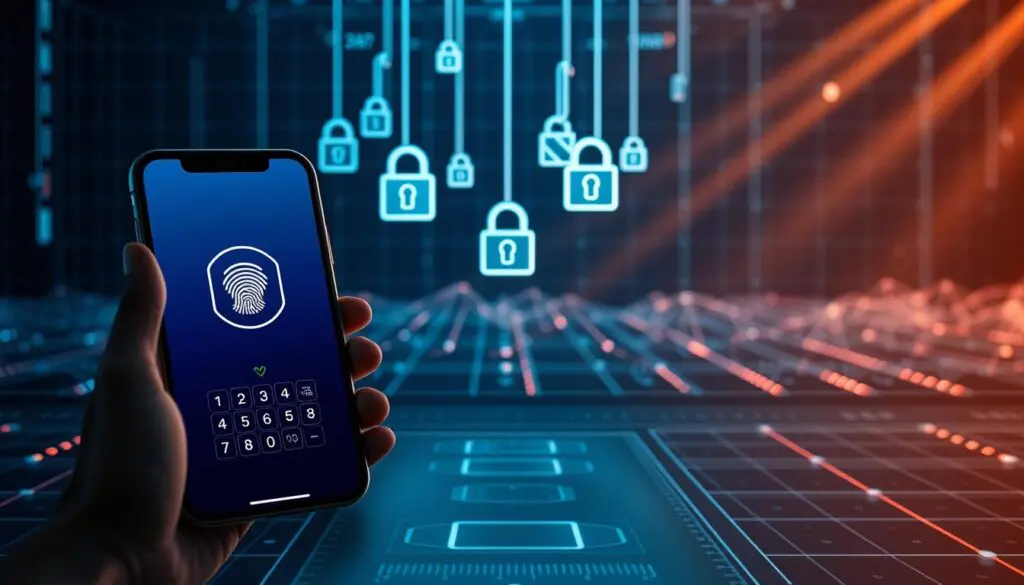In today’s digital landscape, protecting sensitive information is crucial. In recent news, 16 billion passwords exposed in record-breaking data breach was reported by Cybernews. With the rise of cyber threats, relying on a single layer of security is no longer sufficient. That’s where multi-factor authentication (MFA) comes in – a robust solution that adds an extra layer of protection to your accounts, making it significantly harder for unauthorized users to gain access. By requiring additional verification steps, MFA provides a stronger defense against potential breaches, giving you and your organization peace of mind.
What is Multi-Factor Authentication?
By combining something you know (like a password), something you have (like a mobile device), and something you are (like a fingerprint), MFA creates multiple layers of defense beyond just passwords.
The Evolution of Authentication Security
The evolution of authentication security has seen a significant shift from simple password systems to more sophisticated multi-layered approaches. Traditional username-password combinations have proven vulnerable to various attack methods, including credential stuffing, phishing, and brute force attacks. MFA addresses these vulnerabilities by incorporating multiple verification factors, thereby enhancing security.
| Authentication Method | Security Level | Vulnerability |
|---|---|---|
| Username-Password | Low | High |
| Two-Factor Authentication | Medium | Medium |
| Multi-Factor Authentication | High | Low |
By understanding the fundamental principles of MFA, organizations can implement effective security strategies that strike a balance between protection and user experience. As cyber threats continue to evolve, the adoption of MFA becomes increasingly critical for safeguarding sensitive information.
Why MFA is Critical for Business Security
By adopting MFA, businesses can reduce the risk of data breaches, comply with regulatory requirements, and better protect sensitive information.
The Limitations of Password-Only Authentication
Password-only authentication is plagued by issues such as weak passwords and password reuse across multiple sites. This makes it easier for attackers to gain unauthorized access.
- Weak Passwords: Many users choose simple, easily guessable passwords.
- Password Reuse: Using the same password across multiple sites increases the risk of a breach.
Implementing MFA significantly enhances security by requiring additional verification steps beyond just a password.
The Three Main Types of Authentication Factors
Understanding the three main types of authentication factors is crucial for implementing effective multi-factor authentication. These factors are categorized into knowledge, possession, and inherence factors, each providing a unique layer of security.
Knowledge Factors: What You Know
Knowledge factors are pieces of information that only the user should know, such as passwords, PINs, and answers to security questions. While these are the most common authentication methods, they are also vulnerable to social engineering and phishing attacks. To strengthen security, it’s essential to use complex passwords and keep them confidential.
Possession Factors: What You Have
Possession factors verify what the user has, such as a smartphone receiving SMS codes or an authentication app generating time-based codes. These physical devices add a significant layer of security since attackers need to obtain the device to compromise this factor physically. Examples include hardware tokens, smart cards, and security keys.
Inherence Factors: What You Are
Inherence factors authenticate based on who the user is through unique biological characteristics such as fingerprint recognition, facial features, and retina scans. These factors provide a high level of security as they are difficult to replicate or steal. The use of inherence factors is becoming increasingly popular in modern authentication systems.
How Multi-Factor Authentication Works
The Authentication Process Explained
The MFA authentication process typically begins with a traditional username and password entry, followed by one or more additional verification steps. When a user attempts to log in, the system first validates the primary credentials, then initiates secondary verification through methods like sending a one-time code, requesting a biometric scan, or prompting for a hardware token.
Real-World MFA Examples
Real-world MFA examples include banking apps that require both a password and a fingerprint scan, email services that send verification codes to mobile devices, and corporate networks that use hardware security keys alongside passwords. We’ve designed modern MFA systems to evaluate contextual factors like login location, device information, and user behavior patterns to determine when additional verification steps are necessary.

By requiring multiple factors, MFA provides robust security, significantly reducing the risk of cyber attacks. Cloud-based authentication services have made implementing sophisticated MFA processes more accessible for organizations of all sizes.
MFA vs. Two-Factor Authentication
The terms MFA and 2FA are often used interchangeably, but there are key differences that organizations should be aware of when implementing authentication protocols. While both methods aim to enhance security, they differ in the number of verification factors required.
Key Differences Between MFA and 2FA
Two-factor authentication (2FA) is a subset of MFA that requires exactly two verification factors, typically a password and a temporary code sent via SMS or generated by an authenticator app. In contrast, MFA can involve two or more factors, depending on the security requirements. This flexibility allows organizations to tailor their authentication processes to specific needs.
When to Use 2FA vs. Full MFA
Organizations should consider implementing 2FA as a minimum standard for all user accounts, reserving more comprehensive MFA for sensitive systems or high-risk operations. The decision between 2FA and MFA should balance security needs, user experience, and implementation costs. Modern authentication systems allow for flexible policies that apply different levels of authentication based on risk assessment or user roles.
| Authentication Method | Number of Factors | Security Level | User Convenience |
|---|---|---|---|
| 2FA | 2 | High | Moderate |
| MFA | 2 or more | Very High | Variable |

Advanced MFA Technologies and Methods
The landscape of Multi-Factor Authentication (MFA) is evolving with advanced technologies that provide enhanced security and user convenience. By leveraging methods such as adaptive authentication, behavioral biometrics, and passwordless login, organizations can significantly improve their security posture.
Behavioral biometrics analyze a user’s behavior, such as typing patterns, to provide continuous authentication, ensuring that the user is who they claim to be throughout their session. This approach, combined with passwordless authentication methods, eliminates the reliance on static passwords, reducing the risk of breaches.
As organizations continue to adopt these advanced MFA technologies, they can expect enhanced security and a more streamlined user experience. The future of authentication is moving towards a more dynamic and responsive approach, one that adapts to the ever-changing landscape of cyber threats.
Implementing MFA in Your Organization
Implementing MFA is a crucial step in protecting your organization’s data. Start by assessing your security needs and choosing the right MFA method for your users.
Begin with a pilot group to test the implementation and identify any potential issues before rolling it out to the entire organization.
Conclusion: The Future of Authentication Security
As we move forward in a digital landscape increasingly vulnerable to cyber threats, the adoption of multi-factor authentication stands out as a critical step in safeguarding our digital identities and assets. By embracing safeguards such as MFA and endpoint security management, organizations can significantly bolster their security posture, protecting against the ever-evolving tactics of malicious actors.
